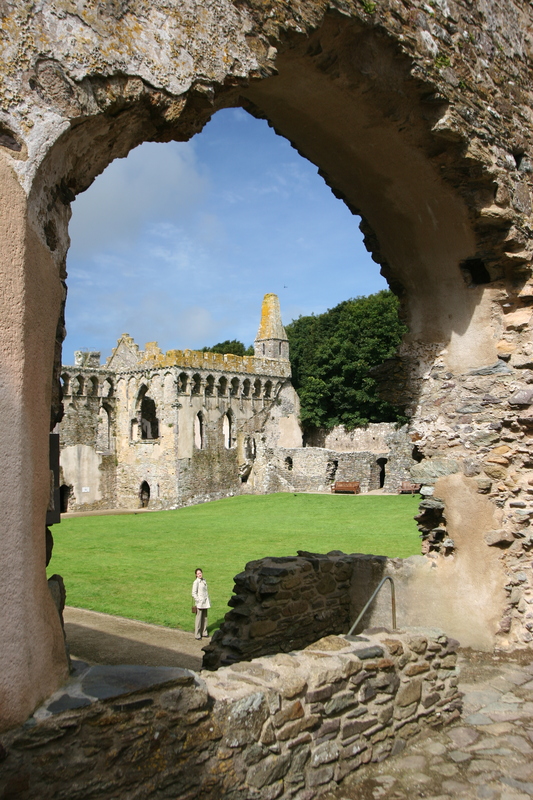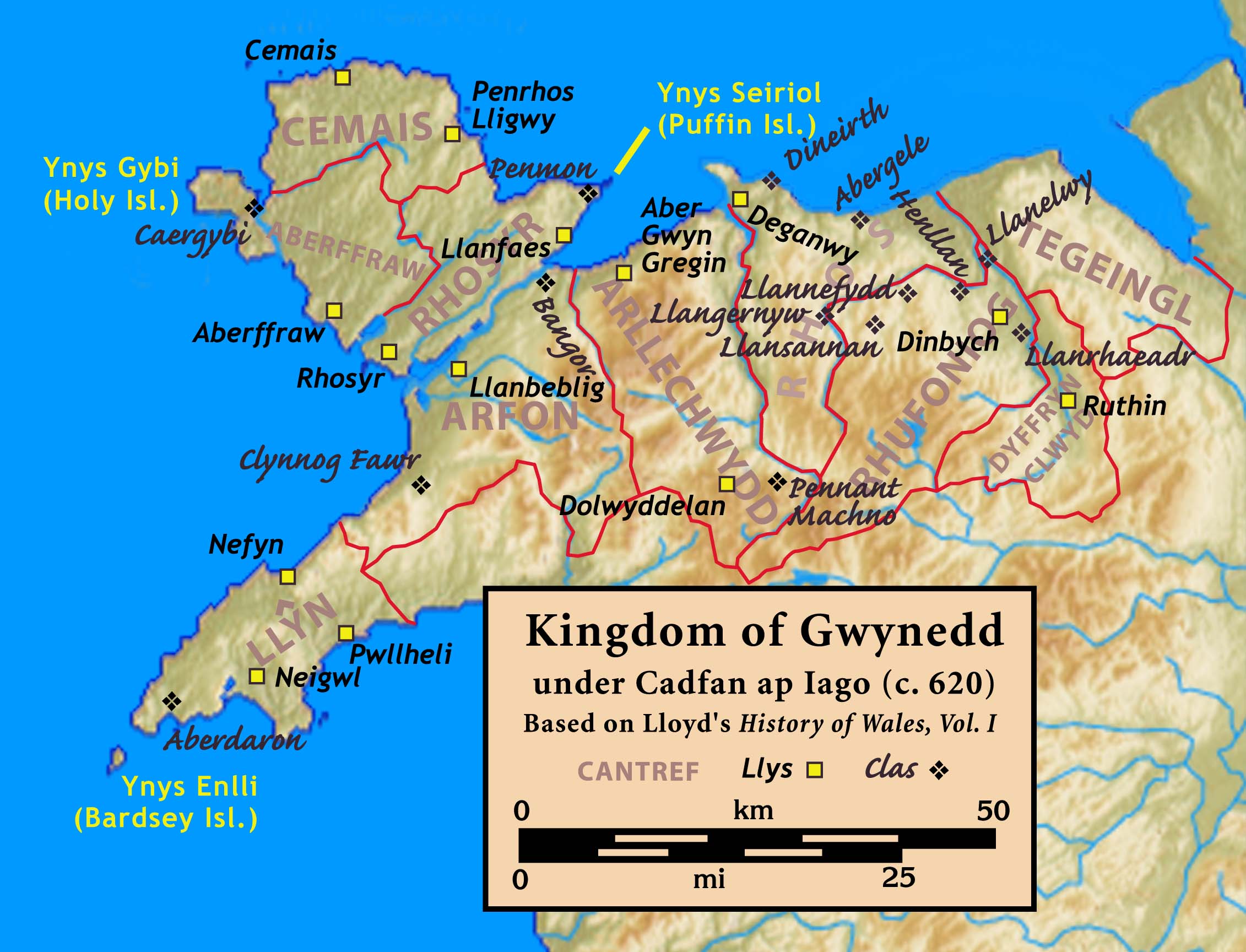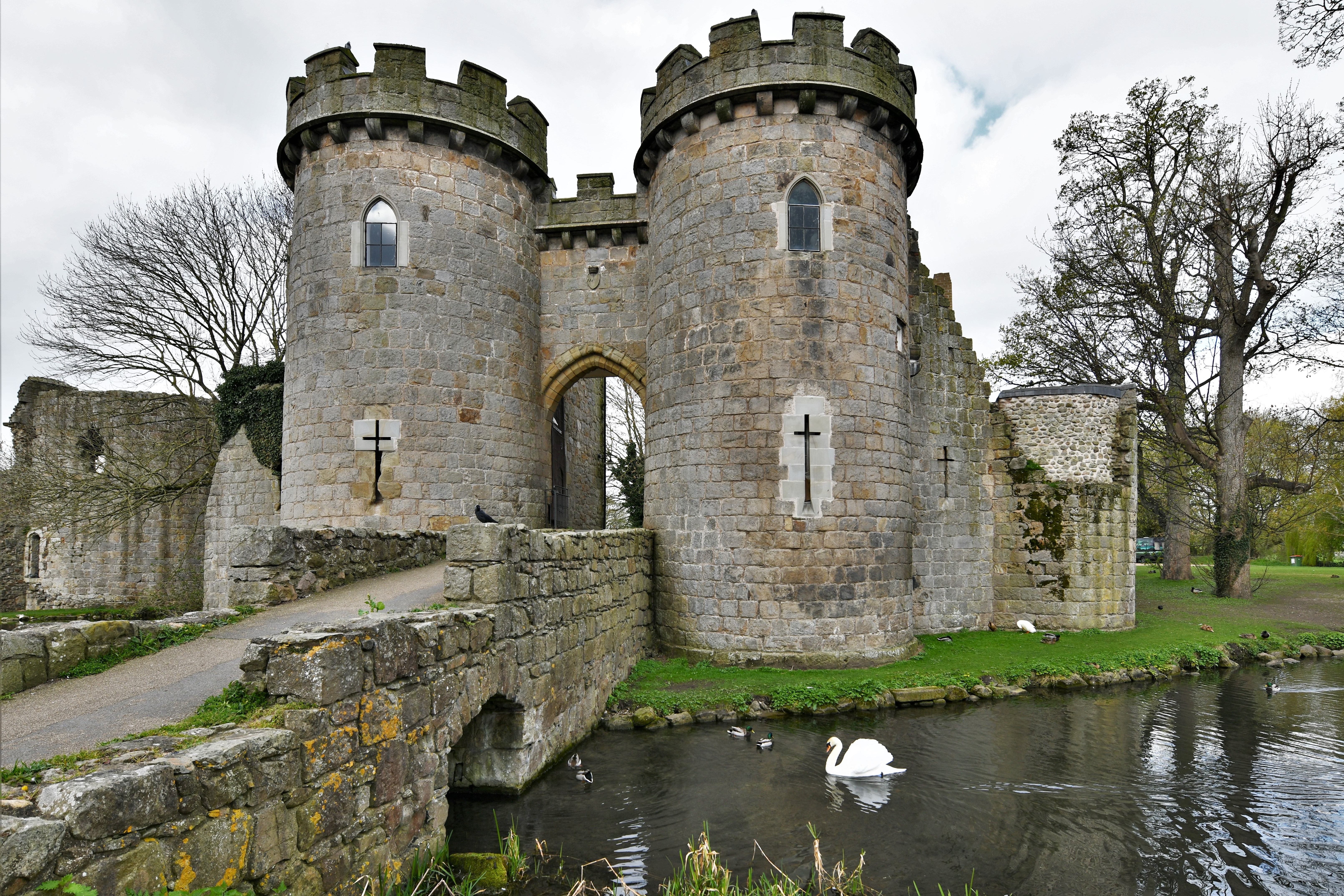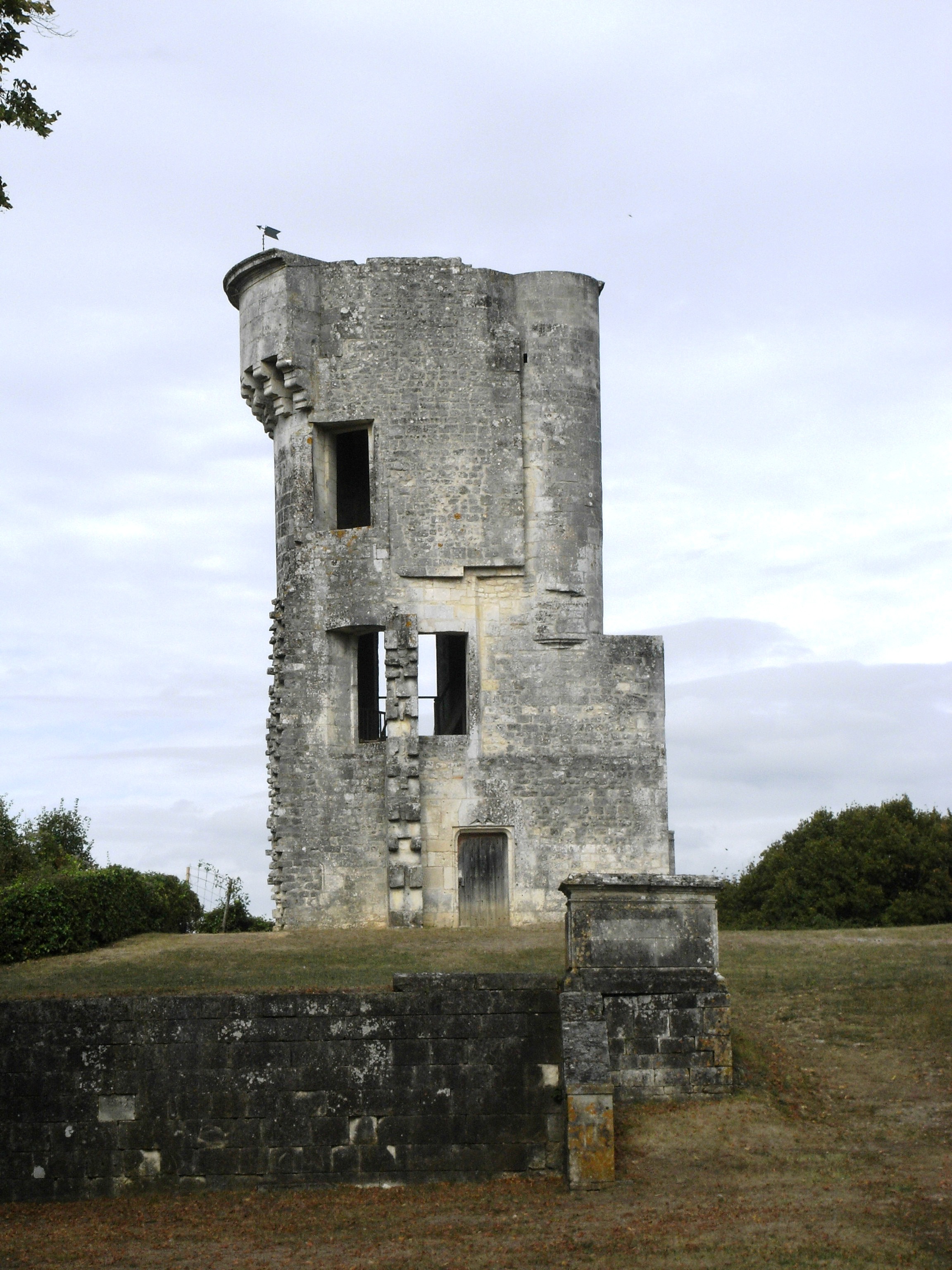|
Rhys Ap Gruffudd
Rhys ap Gruffydd or ap Gruffudd (often anglicised to "Griffith"; c. 1132 – 28 April 1197) was the ruler of the kingdom of Deheubarth in south Wales from 1155 to 1197. Today, he is commonly known as The Lord Rhys, in Welsh ''Yr Arglwydd Rhys'', although this title may have not been used in his lifetime. He usually used the title "Proprietary Prince of Deheubarth" or "Prince of South Wales", but two documents have been discovered in which he uses the title "Prince of Wales" or "Prince of the Welsh". At the time, the word ''prince'', deriving as it did from the Latin ''princeps'', meant "first person, chief leader; ruler, sovereign." It wasn't until the 14th century that it came to mean "heir to the throne". Thus, Rhys, by designating himself princeps, was calling himself the principal ruler of Wales. Rhys was one of the most successful and powerful Welsh rulers, and, after the death of Owain Gwynedd of Gwynedd in 1170, the dominant power in Wales. Rhys's grandfather, Rhys ... [...More Info...] [...Related Items...] OR: [Wikipedia] [Google] [Baidu] |
St Davids Cathedral
St Davids Cathedral () is a Church in Wales cathedral situated in St Davids, Britain's smallest city, in the county of Pembrokeshire, near the most westerly point of Wales. Early history Monastery of Saint David, Wales, A monastic community was founded by Saint David, Abbot of Menevia, who died in 589. Between 645 and 1097, the community was attacked many times by raiders, including the Vikings; however it was of such note as both a religious and an intellectual centre that King Alfred summoned help from the monastic community at St Davids in rebuilding the intellectual life of the Kingdom of Wessex. Many of the bishops were murdered by raiders and marauders, including Bishop Moregenau in 999 and Bishop Abraham in 1080. The stone that marked his grave, known as the "Abraham Stone", is intricately carved with early Celtic art, Celtic symbols and is now on permanent display within the Cathedral Exhibition at Porth-y-Tŵr. In 1081, William the Conqueror William I's Welsh campaign o ... [...More Info...] [...Related Items...] OR: [Wikipedia] [Google] [Baidu] |
Kingdom Of Gwynedd
The Kingdom of Gwynedd (Medieval Latin: ; Middle Welsh: ) was a Wales in the Early Middle Ages, Welsh kingdom and a Roman Empire Succession of states, successor state that emerged in sub-Roman Britain in the 5th century during the Anglo-Saxon settlement of Britain. Based in northwest Wales, the list of rulers of Gwynedd, rulers of Gwynedd repeatedly rose to dominance and were acclaimed as "King of the Britons" before losing their power in civil wars or invasions. The kingdom of Gruffydd ap Llywelynthe King of Wales from 1055 to 1063was shattered by a Timeline of conflict in Anglo-Saxon Britain, Saxon invasion in 1063 just prior to the Norman invasion of Wales, but the House of Aberffraw restored by Gruffudd ap Cynan slowly recovered and Llywelyn the Great of Gwynedd was able to proclaim the Principality of Wales at the Aberdyfi gathering of Welsh princes in 1216. In 1277, the Treaty of Aberconwy between Edward I of England and Llywelyn's grandson Llywelyn ap Gruffudd granted pe ... [...More Info...] [...Related Items...] OR: [Wikipedia] [Google] [Baidu] |
Map Of Mediaeval Kingdoms Of Wales C
A map is a symbolic depiction of interrelationships, commonly spatial, between things within a space. A map may be annotated with text and graphics. Like any graphic, a map may be fixed to paper or other durable media, or may be displayed on a transitory medium such as a computer screen. Some maps change interactively. Although maps are commonly used to depict geography, geographic elements, they may represent any space, real or fictional. The subject being mapped may be two-dimensional such as Earth's surface, three-dimensional such as Earth's interior, or from an abstract space of any dimension. Maps of geographic territory have a very long tradition and have existed from ancient times. The word "map" comes from the , wherein ''mappa'' meant 'napkin' or 'cloth' and ''mundi'' 'of the world'. Thus, "map" became a shortened term referring to a flat representation of Earth's surface. History Maps have been one of the most important human inventions for millennia, allowin ... [...More Info...] [...Related Items...] OR: [Wikipedia] [Google] [Baidu] |
Madog Ap Maredudd
Madog ap Maredudd (, ; died 1160) was the last prince of the entire Kingdom of Powys, Wales. He held for a time, the FitzAlan Lordship of Oswestry, family of the Earl of Arundel, Earls of Arundel, of Arundel Castle. His daughter married Lord Rhys, prince of Wales. Early life Madog was the son of King Maredudd ap Bleddyn and grandson of King Bleddyn ap Cynfyn. He followed his father on the throne of Powys in 1132. He is recorded as taking part in the Battle of Lincoln (1141), Battle of Lincoln in 1141 in support of Ranulf de Gernon, 4th Earl of Chester, along with Owain Gwynedd's brother Cadwaladr ap Gruffydd and a large army of Welshmen. In 1149 he is recorded giving the commote of Cyfeiliog to his nephews Owain Cyfeiliog and Meurig. The same year Madog was able to rebuild Oswestry Castle, a fortress of William Fitzalan (rebel), William Fitzalan. It would seem likely that he had gained both the fortresses of Oswestry and Whittington Castle, Whittington in 1146 of Fitzalan, the ... [...More Info...] [...Related Items...] OR: [Wikipedia] [Google] [Baidu] |
Gwenllian Ferch Madog
Gwenllian (or Gwenllïan) is a Welsh given name, a combination of ''gwen'' "fair, blessed, white" and ''llian'' " flaxen"). It is most prominently known as the name of two women in medieval Wales who have, for different reasons, become symbols of Welsh patriotism and/or independence. Notable people Arts and entertainment * Gwenllian Anthony, member of Adwaith * Gwenllian Gill, actress Athletes * Gwenllian Jenkins, rugby union player * Gwenllian Pyrs, rugby union player Medieval Wales *Gwenllian ferch Gruffydd (1097–1136) Her patriotic revolt and subsequent death in battle at Kidwelly Castle contributed to the Great Revolt of 1136 *Gwenllian ferch Llywelyn (1282–1337) A daughter of Llywelyn ap Gruffudd, Ein Llyw Olaf, and sister to Catherine his eldest daughter. Owain Glyndŵr was later to adopt the (lions rampant version) arms of Llywelyn on the basis of direct descent via Catherine, Catherine being the heraldic heiress of Llywelyn.Owen, Edward: ‘Owain Lawgoch � ... [...More Info...] [...Related Items...] OR: [Wikipedia] [Google] [Baidu] |
Cadell Ap Gruffydd
Cadell ap Gruffydd (died 1175) was prince of the Kingdom of Deheubarth in Southwest Wales. Cadell was the son of Gruffydd ap Rhys, who held part of the Kingdom of Deheubarth with the remainder in the hands of various Norman lords. Gruffydd died in 1137 and Cadell's brother Anarawd ap Gruffydd took over the throne. Cadell first appears in the historical records the following year, when he helped his brother Anarawd and Owain Gwynedd of Gwynedd and his brother Cadwaladr ap Gruffydd in an assault on Cardigan Castle. In 1143 Anarawd was murdered by Cadwaladr's men, and Cadell took over as prince of Deheubarth, continuing the work Anarawd had started to win back the remainder of his grandfather's kingdom. In 1146 he captured the castles of Carmarthen (repairing and retaining it for several years) and Llanstephan. In the following year he defeated Walter Fitzwiz. In 1150 he turned north and reclaimed southern Ceredigion, which had been held for Gwynedd by Hywel ab Owain Gwynedd. C ... [...More Info...] [...Related Items...] OR: [Wikipedia] [Google] [Baidu] |
Anarawd Ap Gruffydd
Anarawd ap Gruffydd (died 1143) was a Prince of Deheubarth in Southwest Wales. Lineage Anarawd was the eldest son of Gruffydd ap Rhys. On the death of his father in 1137, Anarawd took over the rule of Deheubarth. Resistance In 1136 he and his brother Cadell ap Gruffydd joined with the Prince of Gwynedd, Owain Gwynedd and the latter's brother Cadwaladr ap Gruffydd in an assault on Cardigan Castle which was in Norman hands. The assault was aided by a fleet of Viking ships, but an agreement was reached and the siege lifted. Dispute with Canterbury In 1140 Anarawd again supported Owain Gwynedd, this time in the dispute with the Archbishop of Canterbury, Theobald of Bec, about the appointment of a Bishop of Bangor. Death by treachery However, in 1143 Anarawd was treacherously killed by the men of Owain's brother Cadwaladr. Cadwaladr himself was strongly suspected of having ordered the killing. This greatly angered Owain, for Anarawd had been a key ally and was about to ... [...More Info...] [...Related Items...] OR: [Wikipedia] [Google] [Baidu] |
Gruffudd Ap Cynan
Gruffudd ap Cynan (–1137) was List of rulers of Gwynedd, King of Gwynedd from 1081 until his death in 1137. In the course of a long and eventful life, he became a key figure in Welsh resistance to House of Normandy, Norman rule. As a descendant of Rhodri Mawr (Rhodri the Great), Gruffudd ap Cynan was a senior member of the princely House of Aberffraw. Through his mother, Gruffudd had close family connections with the Norsemen, Norse settlement around Dublin and he frequently used Ireland as a refuge and as a source of troops. He three times gained the throne of Gwynedd and then lost it again, before regaining it once more in 1099 and this time keeping power until his death. Gruffudd laid the foundations which were built upon by his son Owain Gwynedd and his great-grandson Llywelyn ab Iorwerth (Llywelyn the Great). Life Unusual for a Welsh king or prince, a near-contemporary biography of Gruffudd, ''The History of Gruffudd ap Cynan'', has survived. Much of our knowledge of ... [...More Info...] [...Related Items...] OR: [Wikipedia] [Google] [Baidu] |
Richard I Of England
Richard I (8 September 1157 – 6 April 1199), known as Richard the Lionheart or Richard Cœur de Lion () because of his reputation as a great military leader and warrior, was King of England from 1189 until his death in 1199. He also ruled as Duke of Normandy, Duke of Aquitaine, Aquitaine, and Duchy of Gascony, Gascony; Lord of Cyprus in the Middle Ages, Cyprus; Count of Poitiers, Counts and dukes of Anjou, Anjou, Count of Maine, Maine, and Count of Nantes, Nantes; and was overlord of Brittany at various times during the same period. He was the third of five sons of Henry II of England and Eleanor of Aquitaine and was therefore not expected to become king, but his two elder brothers predeceased their father. By the age of 16, Richard had taken command of his own army, putting down rebellions in Poitou against his father. Richard was an important Christian commander during the Third Crusade, leading the campaign after the departure of Philip II of France and achieving sev ... [...More Info...] [...Related Items...] OR: [Wikipedia] [Google] [Baidu] |
Justiciar Of South Wales
The Justiciar of South Wales, sometimes referred to as the Justiciar of West Wales was a royal official of the Principality of Wales during the medieval period. He controlled the southern half of the principality. Background Justiciar was a title given to one of the monarch's chief ministers in both England and Scotland during the medieval period, and was introduced to Wales in the 13th century. With the final defeat of the Principality of Wales in 1282, Edward I of England "annexed and united" its territories to the English crown although it did not become part of the Kingdom of England but was the king's personal fief. The governance and constitutional position of the principality after its conquest was set out in the Statute of Rhuddlan of 1284. The new administration comprised a number of royal officials appointed at the King's pleasure, including the Justiciar of South Wales. Responsibilities Based at Carmarthen, the Justiciar was responsible for the administration of the so ... [...More Info...] [...Related Items...] OR: [Wikipedia] [Google] [Baidu] |
Henry II Of England
Henry II () was King of England The monarchy of the United Kingdom, commonly referred to as the British monarchy, is the form of government used by the United Kingdom by which a hereditary monarch reigns as the head of state, with their powers Constitutional monarchy, regula ... from 1154 until his death in 1189. During his reign he controlled Kingdom of England, England, substantial parts of Wales in the High Middle Ages, Wales and Lordship of Ireland, Ireland, and much of Kingdom of France, France (including Duchy of Normandy, Normandy, County of Anjou, Anjou, and Duchy of Aquitaine, Aquitaine), an area that altogether was later called the Angevin Empire, and also held power over Kingdom of Scotland, Scotland and the Duchy of Brittany. Henry was the eldest son of Geoffrey Plantagenet, Count of Anjou, and Empress Matilda, Matilda, daughter of Henry I of England. By the age of fourteen, he became politically and militarily involved in The Anarchy, his mother's efforts ... [...More Info...] [...Related Items...] OR: [Wikipedia] [Google] [Baidu] |
Normans
The Normans (Norman language, Norman: ''Normaunds''; ; ) were a population arising in the medieval Duchy of Normandy from the intermingling between Norsemen, Norse Viking settlers and locals of West Francia. The Norse settlements in West Francia followed a series of raids on the French northern coast mainly from what is now Denmark, although some also sailed from Norway and Sweden. These settlements were finally legitimized when Rollo, a Scandinavian Vikings, Viking leader, agreed to swear fealty to Charles the Simple, King Charles III of West Francia following the Siege of Chartres (911), siege of Chartres in 911, leading to the formation of the ''County of Rouen''. This new fief, through kinship in the decades to come, would expand into what came to be known as the ''Duchy of Normandy''. The Norse settlers, whom the region as well as its inhabitants were named after, adopted the language, Christianity, religion, culture, social customs and military, martial doctrine of the Wes ... [...More Info...] [...Related Items...] OR: [Wikipedia] [Google] [Baidu] |





